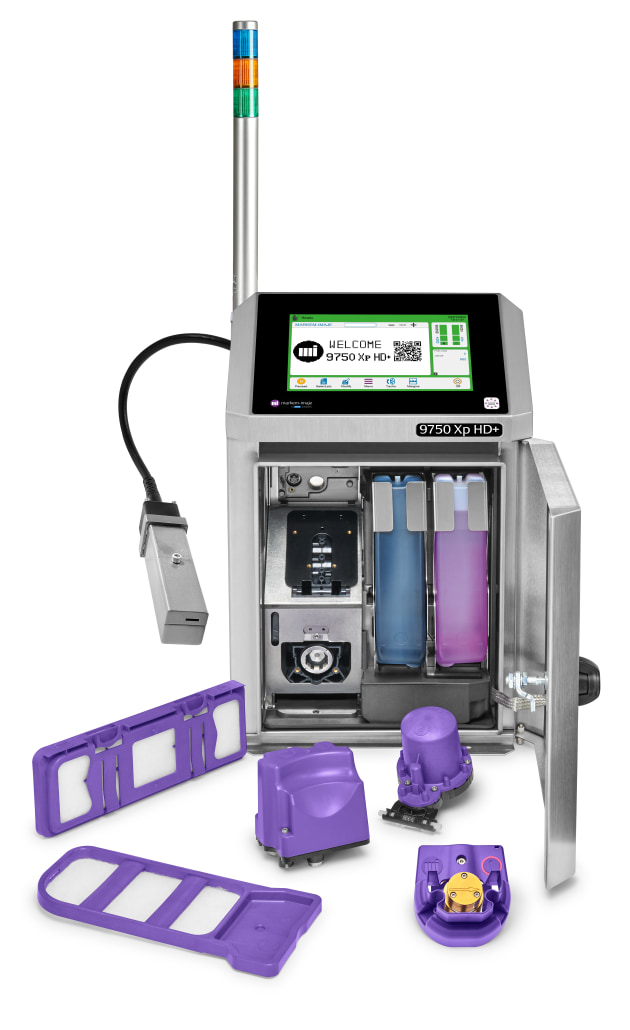Markem-Imaje, a leader in industrial marking and coding systems, has launched its 9750 Expert Series continuous inkjet (CIJ) coders. These printers have been designed to address the complex coding requirements of the fast-moving consumer goods (FMCG) and electronics manufacturing industries.
Markem-Imaje says the 9750 Expert Series coders offer robust performance, even in challenging conditions such as high humidity, dusty environments, and ultra-fast production lines. Notably, the Expert HD+ coder can produce high-quality GS1 Digital Links and QR codes as small as 5mm in height, ensuring compliance with strict traceability and authentication standards.
According to the company, one of the standout features of these coders is their ability to print three lines of text on extremely small surfaces, including phone batteries, electronics components, and aspirin tubes, enabling precise and flexible coding.

Versatility is another key advantage of the 9750 Expert Series, says the company. Models like the Expert+ and Expert HD+ can accommodate multiple inks across different manufacturing plants, simplifying maintenance and reducing costs.
These coders integrate into production lines thanks to an M12 input/output (I/O) connector and compatibility with various industrial communication protocols. This integration ensures efficient communication with other equipment and allows for production line halts when necessary.
Markem-Imaje also offers a customisable 24-pin interface, allowing manufacturers to optimise their production lines for efficiency and adaptability.
Moreover, the company points out these coders are environmentally friendly. They reduce volatile organic compound (VOC) emissions by up to 35 per cent in consumable-saving mode when using MEK inks. With MEK-free inks, the reduction is even greater, up to 50 per cent as standard and up to 60 per cent in consumable-saving mode, surpassing industry standards. Additionally, they support the replacement of individual parts, reducing the equipment sent to landfills and enhancing the products’ eco-friendly credentials.






